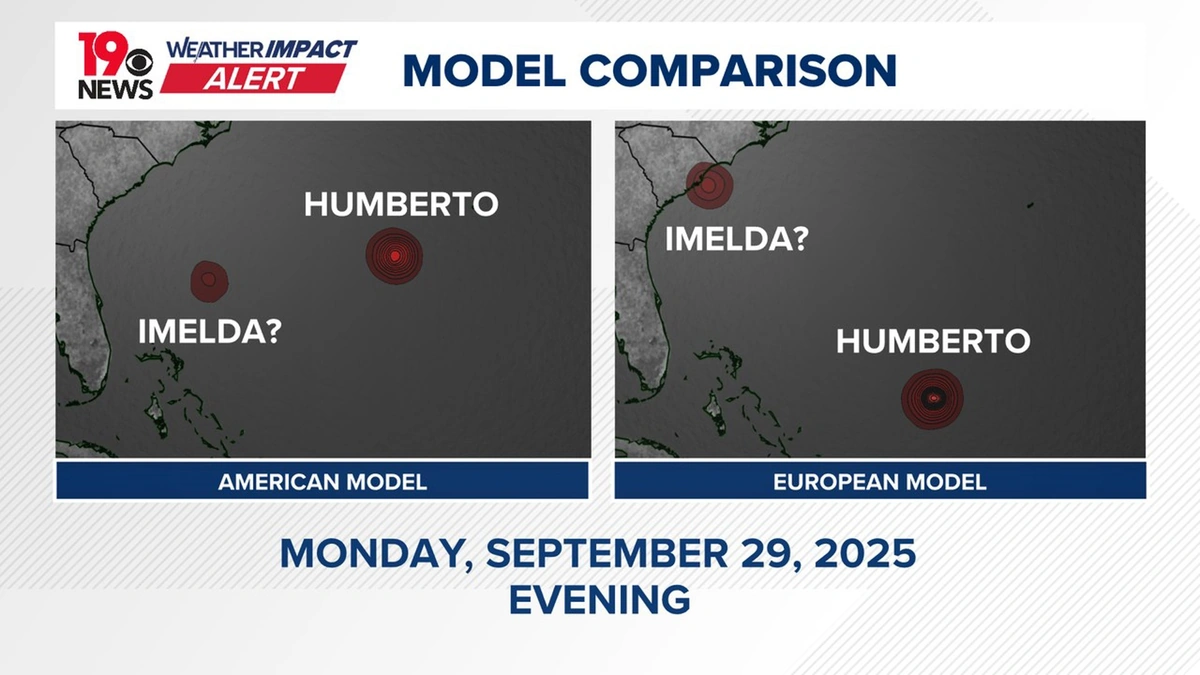Hurricane Imelda. You might vaguely remember the name, a blip in the endless stream of weather events. But here’s the thing: Imelda wasn’t just another storm. It was a catastrophic flood event that exposed critical vulnerabilities in our infrastructure and disaster preparedness. And, frankly, we haven’t fully learned its lessons. That’s why it’s crucial to understand Hurricane Imelda, its impact, and what it tells us about the future of extreme weather in a changing climate.
Why Hurricane Imelda Was Different

So, what set Imelda apart? It wasn’t the wind speed. It was the sheer volume of rainfall. We’re talking about some areas receiving over 40 inches of rain in just a few days. I mean, that’s insane. This intense rainfall overwhelmed drainage systems, leading to widespread and devastating flooding. But, the impact wasn’t just about the numbers; it was about the location. Imelda stalled over Southeast Texas, a region already prone to flooding. This combination of factors created a perfect storm – quite literally.
What fascinates me is how quickly the narrative shifted after the initial disaster. News cycles move fast, and Imelda faded from the headlines. But for the people affected, the struggle continued long after the floodwaters receded. Here’s where the “why” becomes so important. Ignoring events like Imelda creates a dangerous complacency. This complacency prevents communities from adequately preparing for future extreme weather events.
The Human Cost of Complacency
Let’s be honest, statistics can be numbing. But behind every flood statistic are real people whose lives were upended. Families lost their homes, businesses were destroyed, and communities were torn apart. The emotional and psychological toll of such events is immense. And it’s not just about the immediate aftermath. Many people are still dealing with the long-term consequences of Imelda flooding, including financial hardship, health problems, and emotional trauma.
A common mistake I see is viewing these events in isolation. They are not. Hurricane Imelda is part of a larger pattern of increasingly frequent and intense extreme weather events. The changing climate is exacerbating these trends, making it more likely that we’ll see similar events in the future. That’s why understanding the human cost is so crucial – it forces us to confront the reality of climate change and the urgent need for action.
Lessons Learned (and Ignored?)
So, what did we learn from Hurricane Imelda? Ideally, we learned the importance of investing in resilient infrastructure. This includes upgrading drainage systems, building flood barriers, and implementing better flood management strategies. The reality, though? Progress has been slow and uneven. Funding is often inadequate, and political will can be lacking. It’s frustrating, to say the least.
Furthermore, disaster preparedness at the community level is essential. This includes educating residents about flood risks, developing evacuation plans, and providing access to resources and support. While some communities have made strides in this area, many remain woefully unprepared. The one thing you absolutely must do is stay informed about your local weather patterns and potential risks. Local weather reports can be invaluable in preparing for these events.
Navigating Insurance Claims and Recovery
Dealing with insurance companies after a disaster can be a nightmare. Trust me, I’ve been there. Insurance policies are often complex and confusing, and it can be difficult to navigate the claims process. If you were affected by Hurricane Imelda insurance, you probably know this all too well. A significant challenge many homeowners faced was understanding the difference between flood insurance (typically provided by the National Flood Insurance Program) and standard homeowner’s insurance (which usually doesn’t cover flood damage).
Here’s a key takeaway: Thoroughly document everything. Take photos and videos of the damage, keep detailed records of expenses, and be persistent in your communication with the insurance company. Consider seeking help from a public adjuster or attorney who specializes in disaster claims. And remember, you’re not alone. There are resources and support available to help you navigate this challenging process. Don’t be afraid to ask for help.
The Future of Flood Resilience
Looking ahead, building flood resilience requires a multi-faceted approach. It’s not just about building bigger walls or upgrading drainage systems. It’s about embracing a more holistic approach that considers the social, economic, and environmental factors that contribute to flood risk. This includes addressing climate change, reducing urban sprawl, and restoring natural ecosystems.
I initially thought that technological solutions would be the primary answer. But then I realized, resilient infrastructure requires community engagement. We need to foster a culture of awareness and preparedness, where individuals, businesses, and communities work together to reduce their vulnerability to flooding. This requires a fundamental shift in mindset – from reacting to disasters to proactively preventing them. And that, my friends, is the real challenge.
FAQ | Understanding Hurricane Imelda and Flood Risks
What made Hurricane Imelda so devastating?
The combination of extreme rainfall and its stalling over Southeast Texas, an area already prone to flooding, caused widespread devastation.
What can I do to prepare for future flood events?
Stay informed about weather forecasts, develop an evacuation plan, and consider purchasing flood insurance if you live in a high-risk area.
What if I forgot my application number?
This section is not applicable in the context of Hurricane Imelda.
How can I help communities affected by flooding?
Donate to reputable charities, volunteer your time, and advocate for policies that promote flood resilience.
What are some long-term solutions to reduce flood risk?
Investing in resilient infrastructure, addressing climate change, and restoring natural ecosystems are all crucial steps.
Hurricane Imelda served as a stark reminder of the power of nature and the vulnerability of our communities. But it also offers an opportunity to learn, adapt, and build a more resilient future. By embracing a proactive approach to flood risk management, we can protect our homes, businesses, and communities from the devastating impacts of extreme weather. Don’t let Imelda be forgotten. Let it be a catalyst for change.




